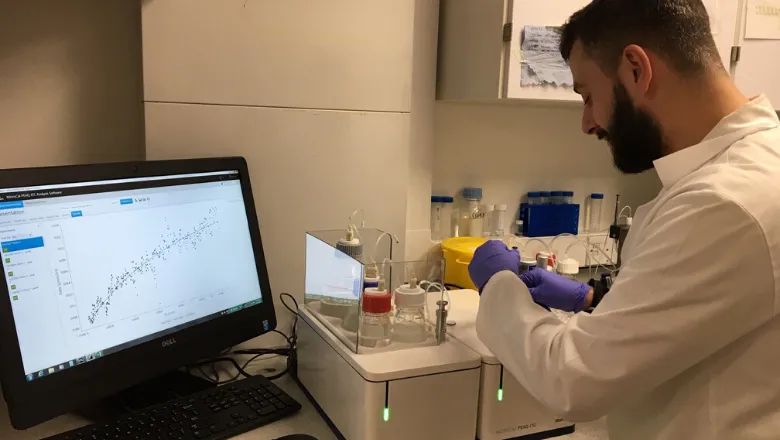We have developed a fast, convenient and precise new methodology using isothermal titration calorimetry to characterise the enzymatic properties of the soluble epoxide hydrolase. This methodology shows promise in the complete and highly reproducible characterisation of sEH mechanisms and in the investigation of inhibitors with potential application to combat hypertension, diabetes and associated complications.
Professor Maria (Sasi) Conte, Professor of Structural Biology, School of Basic & Medical Biosciences
21 February 2020
King's researchers develop novel technique to measure how enzymes work
Researchers have developed a new way to study how enzymes work and how they are inhibited by drugs or by natural inhibitors.

In a study recently published in Analytical Chemistry, a team from the School of Basic & Medical Biosciences led by Professor Maria (Sasi) Conte, used a new Isothermal Titration Calorimetry (ITC)-based method to follow how lipids are metabolised by an enzyme called soluble Epoxide Hydrolase (sEH). The process was also extended to characterise the inhibitors of this enzyme. sEH is implicated in cardiovascular diseases, diabetes and pain.
Enzyme activity and inhibition are measured by following the specific chemical reaction catalysed by the enzyme, either by observing the decrease of the initial substrate or the increase of the final product. It is often difficult and in some cases impossible to study enzymatic reactions because the substrates and the products do not have physico-chemical properties that can be easily monitored over time.
The new methodology is based on measuring the heat generated in an enzymatic reaction, a feature that is common to every catalysed process. It has therefore the potential to be applied to many biological systems that cannot be readily followed by other techniques.
Lipids for example are difficult substrates to study because of their properties. However they are emerging as key regulators of heath and disease.
Speaking of the new methodology, Professor Conte commented: "The ITC methods also promise to provide a general approach for the characterisation of lipid catalysis, given the challenges that lipid metabolism studies pose to traditional spectroscopic techniques. Furthermore, it can be applied in principle to many other systems that are recalcitrant to spectroscopic detections, with enormous impact potential in a wide range of biological and biomedical areas".
The next steps in the research are to continue the investigation on sEH to identify new inhibitors for therapeutical applications, and to further the ITC methodology by testing new enzymes that are difficult to characterise such as kinases and phosphatases. Moreover, this technique can be potentially performed in cellular and crude tissue extracts.
Read the paper here.

